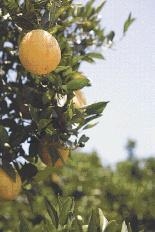Citrus greening disease now in Clarendon
Published: Monday | November 9, 2009

THE MINISTRY of Agriculture and Fisheries has revealed that the citrus huanglongbing/ citrus greening has now been detected in Clarendon.
This comes less than a week after the disease was identified in St Catherine.
Samples collected from a citrus farm in Summerfield were tested by the University of the West Indiesand the presence of the disease confirmed.
"A team comprising Rural Agricultural Development Authority (RADA)-based scientists and extension officers has been dispatched to the affected areas to conduct preliminary analysis to determine the extent of the infection," the ministry said in a release on the weekend. "In addition, a technical committee has been mobilised to formalise initial management options to contain the disease."
Stop order onaffected plants
In the meantime, the ministry said it would be finalising a citrus greening order, aimed at restricting the movement of plant or plant parts from the affected areas as this could cause the disease to be transferred to other parishes.
Citrus greening is a bacterial disease that is considered to be one of the diseases which can have a severe impact on citrus plants and orchards under 10 years old. The presence of the bacterium can remain undetected for several years without plants displaying any visual symptoms. However, the most typical indicators of the disease's presence are: asym-metric blotchy mottle of the leaves; sectoring of the tree with yellow shoots; heavy fruit fall; small, lopsided fruits with aborted seeds; colour inversion on fruits (ripening from the top instead of the bottom); twig dieback and eventual death of plants.
Spread of disease
The bacteria is mainly transmitted to uninfected plants by a small sucking insect known as the Citrus psyllid-diaphorina citri discovered in the island in 2002. In addition, transmission is also possible through the grafting of infected material and or seeds.
Citrus greening affects most citrus species, including hybrids, cultivars, as well as sweet oranges, mandarins, grapefruits, limes and lemons.
No country that has reported the presence of citrus greening has successfully eradicated the disease; however, management programmes have been implemented to reduce the impact of the disease on citrus production.
Control of the disease requires an integrated management approach which includes: Early detection and removal of infected trees. Vector management using chemical and biological methods. Use of certified material for propagation. Use of seedlings produced under cover. Removal of alternate hosts in commercial growing areas. Grower education. If not properly managed, Jamaica's $3.7-billion citrus industry could see a decline in production and productivity of orchards, reduced earnings from citrus exports, and a shortage of fruits for local consumption.







